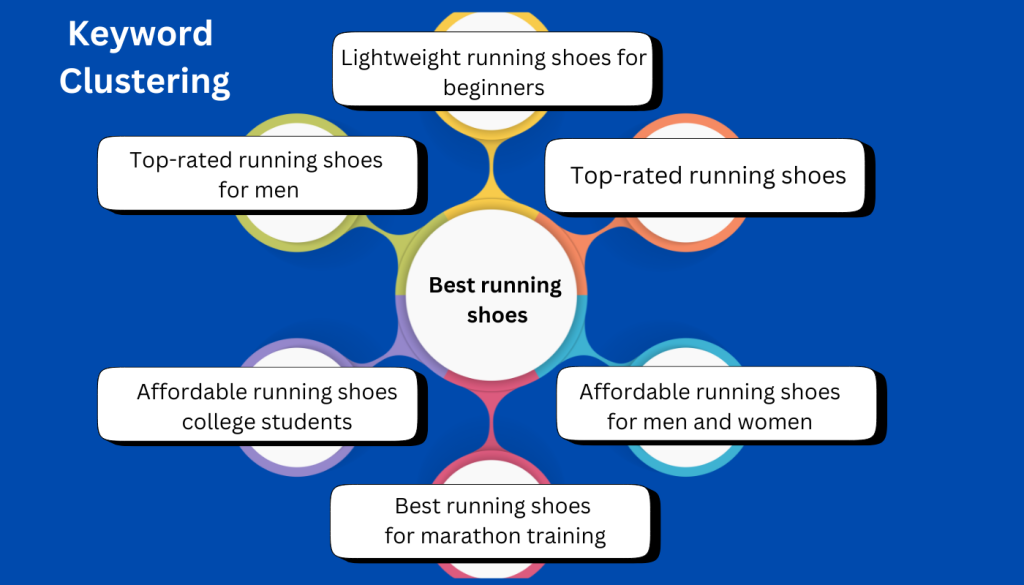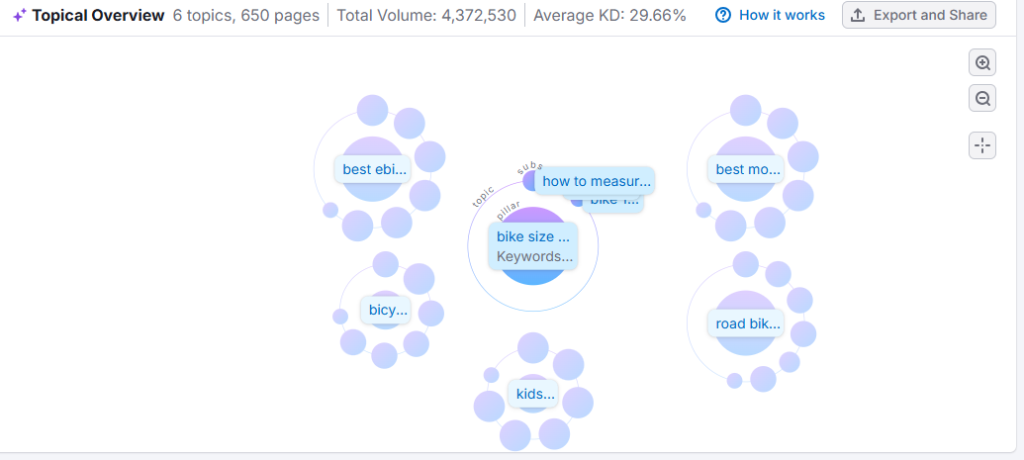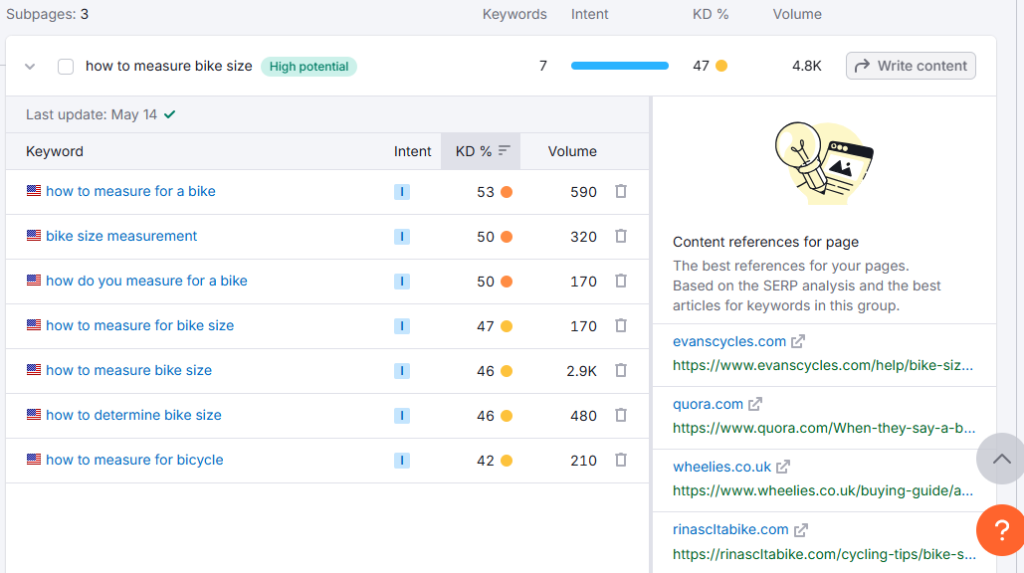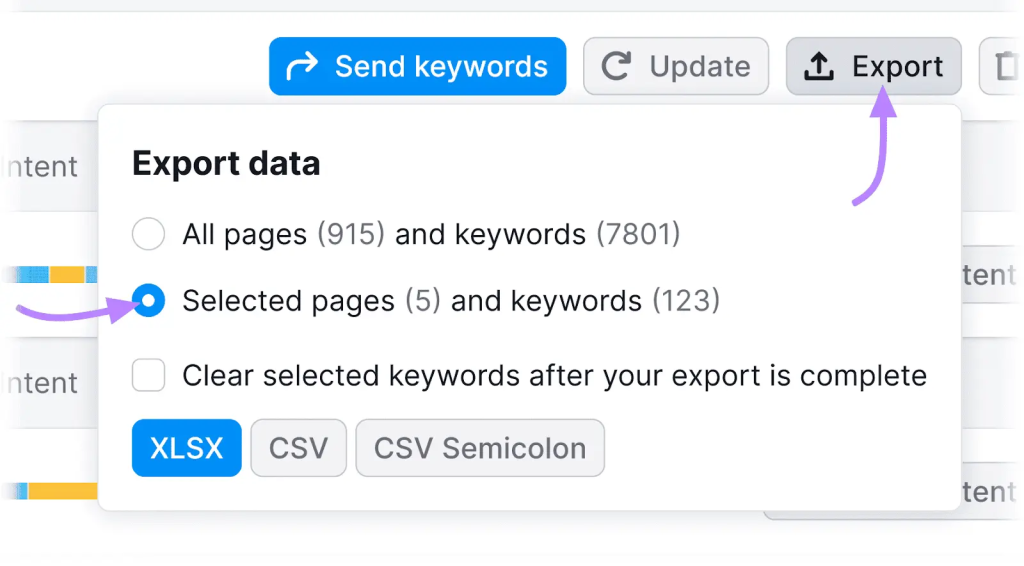Søgeordskortlægning til SEO i 2025 – En omfattende guide

Hurtigt overblik
Keyword mapping assigns specific keywords to individual pages to improve SEO, align content with user intent, and strengthen site structure. It involves researching high-value keywords, categorizing them by intent, mapping them to relevant pages, and implementing internal links to avoid cannibalization. Regularly updating the keyword map ensures content stays optimized and aligned with changing search trends.
Keyword mapping for SEO connects keyword research and content strategy, ensuring a roadmap for assigning specific keywords to individual pages. This ensures your website targets relevant keywords effectively while offering an effective experience for users.
Here, you’ll learn the essentials of keyword mapping, from its core components and strategies to actionable steps and tools that can help you excel in 2025 and beyond.
Whether you’re a seasoned SEO professional, content marketer, or a beginner, this guide will offer you the insights needed to drive your website’s performance.
What is Keyword Mapping for SEO?
Keyword mapping is the process of assigning specific keywords to individual pages on a website. It also has keywords arranged in groups of keyword clusters to create a topical website structure.
This technique improves
- search engine visibility,
- aligns content with user intent, and
- creates a more organized website structure.
This process helps businesses to ensure their website content addresses the needs of their audience and enhances the overall user experience.
What are the Core Components of Keyword Mapping?
Before diving into keyword mapping, let’s have a look at the major components of the process.
Keyword Mapping Strategy
A solid keyword mapping strategy focuses on matching the right keywords with the right pages. The strategy also provides you with an effective way to measure your SEO efforts. You can assess the results with your set strategy, helping you take measures faster.
The strategy involves:
- Identifying High-Value Keywords: Targeting keywords with the potential to drive significant traffic and conversions.
- Categorizing Keywords by Intent: Ensuring that the content aligns with what the user wants to achieve when searching.
- Continuously Updating the Keyword Map: Regular updates ensure that your keyword map stays relevant as trends, user behavior, and search algorithms evolve.
Keyword Targeting for SEO
Keyword targeting involves selecting primary and secondary keywords for each page.
Primary Keywords are the main focus of the page and typically have high search volume and clear intent. These keywords can be short-tail, having broad search intent. Or, these can be long-tail with more specific search queries and three or more word counts.
Examples can include “WordPress Plugins” (short tail) or “What are the Top WordPress Plugins” (long-tail).
På den anden side, Secondary Keywords support the primary keyword by addressing related queries and variations. These are dispersed in the headings and text of blog content or a landing page.
For the above example, if your primary keyword is “WordPress Plugins”, then some relevant secondary keywords could be:
- WordPress plugins for beginners
- Must-have WordPress plugins
- WordPress affiliate plugins
- How to install WordPress plugins
- Troubleshooting WordPress plugins, etc.
Proper keyword targeting helps your content rank for multiple relevant queries while maintaining focus and readability.
On-page SEO Keyword Clustering
Keyword clustering groups sets of related search terms together based on their similarity in meaning or user intent. Instead of targeting individual keywords in isolation, you group closely related keywords into clusters and create content that comprehensively addresses those terms.
This technique involves:
- Identifying semantically related keywords.
- Incorporating these keywords naturally into headings, body content, and metadata.
- Ensuring the content remains user-friendly and informative.
By clustering keywords, you can rank for a broader range of search terms without creating duplicate content or keyword cannibalization.
For instance, let’s consider the primary keyword “best running shoes.” A well-executed keyword cluster for this might include:
- Primary Keyword: Best running shoes
- Secondary Keywords:
- Top-rated running shoes
- Affordable running shoes for men and women
- Best running shoes for marathon training
- Lightweight running shoes for beginners

For content targeting this cluster, the page could:
- Use “best running shoes” in the main heading (H1).
- Integrate secondary keywords in subheadings (H2, H3) and throughout the content body.
- Address related topics like shoe materials, performance, and user reviews to comprehensively cover user intent.
- Include a comparison table, expert recommendations, and internal links to related content, such as running gear or fitness guides.
SEO Content Structure
Having an optimized SEO content structure ensures your website is both user-friendly and search engine-friendly. It typically includes using a clear hierarchy of headings (H1, H2, H3), shorter paragraphs, bullet points, and relevant keyword placement to guide readers through the text.
Tilføjelse Interne links will also help connect related pages to guide users and distribute link equity effectively. Additionally, Meta Descriptions and Title Tags with target keywords will boost your chances to improve click-through rates (CTR) and search engine visibility.
Now that you are familiar with the components of Keyword Mapping, let’s discuss the process thoroughly.
How to Map Keywords for SEO
Conduct Comprehensive Keyword Research
Thorough research kickstarts your keyword mapping. To do that, you need to find your seed or primary keyword for which you want to rank. It could be a webpage or blog post.
Use tools like Google Keyword Planner, SEMrush, or Ahrefs to find keywords with high search volume, low competition, and clear intent.
Try to identify Long-tail søgeord som these have lower competition and higher conversion potential. Prioritize keywords based on your overall keyword strategy.
Also, analyze the competitors’ websites to find out keyword opportunities. It could include identifying NLP keywords or finding content gaps with tools like GetGenie AI. You can also try tools like Google Trends to identify seasonal or emerging keywords.
For example, using GetGenie AI can help you conduct Søgeordsforskning comprehensively.
When you go to the WordPress Dashboard ⇒ try clicking on Add New to create a new post.
Once you are on the new post page, you will see the SEO Mode for AI keyword research. If you click on the “Write For Me”, Blog Wizard shows up which will do the Keyword extraction and other related work.
Turning on the SEO Mode option, as shown below, triggers the Keyword Analysis of Genie.
Providing keywords, selecting the country from the dropdown and finally, clicking on the Analyze Keyword Button completes the process of Keyword Research.
Now an extended tab appears where you will find all sorts of keyword analysis information.
Here, you can explore the Search Volume, Competition, and CPC of particular keywords for a specified region. You can also find the search Volume Trend and Google Trend for that keyword.
Group Keywords by Intent
Now that you have your keyword list ready, you may move on to organizing them thoughtfully into groups. Ideally, your topic areas depend on your niche and your products or services.
You can begin by grouping related keywords based on their search intent. Create clusters of terms that collectively address the same user query or need, ensuring your content aligns with both user expectations and search engine requirements.
For instance, you can group keywords as follows:
- Informational Intent: Here, the queries seek ideas or knowledge (e.g., “What is keyword mapping?”).
- Navigational Intent: In this type of query, one aims to find a specific website or brand (e.g., “GetGenie login”).
- Transactional Intent: These queries consist of purchasing intent (e.g., “Buy SEO tools online”).
Categorizing keywords ensures that your content meets the expectations of your audience.
The main topic areas encompass numerous associated keywords that can be optimized. These serve as excellent foundations for developing your keyword mapping strategy.
Google’s Helpful Content ranking system values content that showcases expertise and real-life experience. To align with this, focus on topics that reflect your industry and areas of expertise.
Map Keywords to Existing Content with Topic and Keyword Clusters
Now it’s time to start building your keyword map. Start by performing a website audit. You should identify pages that align with specific keywords. Then, find content gaps where high-value keywords lack corresponding pages. And finally, evaluate the performance of existing content and refine it through søgeordsgruppering.
A topic cluster consists of a group of related pages connected through internal links. It features a central pillar page as the main focus, supported by subpages that delve into specific subtopics.
Pillar pages, also called pillar posts or content pillars, are pieces of content that serve as the focal point of a topic cluster. They provide a thorough overview of a broad topic and link to related content pieces.
For example, if your topic cluster focuses on “content marketing”, then your pillar page could be a comprehensive article covering topics like “Content Marketing Basics”, “Content Marketing Techniques”, “How to optimize content”, etc.
You can create both pillar pages and subpages around a keyword cluster.
Keyword Clustering with SEO keyword mapping tools
You can do topical and keyword clustering by using automated, paid tools like Semrush’s Keyword Strategy Builder..
If you opt for Semrush, then the process would be as follows:
Access the Keyword Strategy Builder and form topic and keyword clusters.

Then, add the topics identified in the previous step (or enter keywords your site already ranks for), select the target location, and click “Create list.”

After receiving an email notification with the readied report, you can click the list to view its report, either via email or through “Keyword Lists”.
Following that, the “Topical Overview” shows a visual representation of the main keywords and their corresponding pages. It assigns relevant keywords to pillar pages and related subpages.

To view your clusters in a table, scroll down to the “Page Details” section.
Click the arrow next to a pillar page or subpage to expand the row and see all suggested keywords.

If you plan to carry out the process manually, go with a spreadsheet.
Begin by grouping keywords into clusters based on search intent, aiming for words that address the same question or need. Choose one keyword from each group as your primary focus, with the rest serving as supporting secondary keywords.
These keyword groups will guide the organization of your website, creating a clear and logical navigation path for both users and search engine crawlers. Be sure to consider keyword variations as well.
For instance, if your primary keyword is [Keyword Mapping], related terms could be [Mapping Keywords for SEO].
Organize your keywords, brainstorm potential URLs for your pages, and jot them down on your spreadsheet in columns.
Align Keywords with Website Pages
The next step is to assign a primary keyword to each page, complemented by secondary keywords.
With a tool like Semrush, you can click “Export” and select the circle next to “Selected pages (#) and keywords (#)” to export these topics into a spreadsheet. You can then edit as you like.

Manually, you may create a spreadsheet with multiple columns that has subdirectories with individual pages. Start with the primary keyword for your page and incorporate it into the page title, meta description, header tags, and other key elements. Organize secondary and tertiary keywords in a separate column for reference.
Once you’re done filling out this spreadsheet, double-check to make sure each page is unique from the others, ensuring the content directly addresses the keyword’s intent.
Create New Content Where Needed
Fill indholdshuller by creating pages that target unaddressed keywords. Best practices include:
- Conducting thorough research to ensure accuracy and depth.
- Using a mix of media (text, images, videos) to enhance engagement.
- Focusing on evergreen content to maintain long-term relevance.
Build an Internal Linking Strategy
Internal linking connects related pages, improving navigation and SEO performance. Key practices include:
- Using descriptive anchor text that includes target keywords.
- Linking to high-priority pages to distribute link equity.
- Regularly auditing and updating internal links to ensure they remain relevant.
Common Mistakes to Avoid in Keyword Mapping
❌ Keyword Cannibalization
Keyword cannibalization occurs when several pages on a website target the same keyword(s) and serve a similar purpose. This creates an SEO issue, as search engines struggle to determine which page is most relevant for related queries, ultimately causing the rankings of these pages to suffer.
You should avoid doing this, which can dilute rankings and confuse search engines. Conduct regular audits to identify and resolve instances of cannibalization.
❌ Overstuffing Keywords
Overloading content with keywords can harm readability and result in penalties from search engines. You should focus on natural and user-friendly keyword integration.
❌ Ignoring Search Intent
Failing to align content with user intent can result in poor rankings and high bounce rates. You need to always prioritize the user’s needs when mapping keywords.
❌ Failing to Update Keyword Map Regularly
Because SEO trends evolve, failing to keep up with the trends will hit your keyword mapping strategy. Audit and adjust your keyword maps to reflect new opportunities, changes in search behavior, and updates in search engine algorithms.
Ofte stillede spørgsmål
What is Keyword Mapping?
Keyword mapping is the process of assigning specific keywords to pages on your website to improve SEO and user experience. It helps organize content and ensures each page targets relevant queries effectively.
How can you map keywords for SEO content planning?
Conduct thorough keyword research, categorize by intent, and align keywords with existing or new content. Regular updates and internal linking are crucial to maintaining an effective keyword map.
How is Keyword Mapping Different from Keyword Research?
Keyword research identifies relevant keywords, while keyword mapping assigns those keywords to specific pages for optimization. Mapping turns research into actionable strategies.
Opsummering
Keyword mapping for SEO is an essential practice that organizes your content strategy, aligns with search intent, and boosts rankings. By avoiding common mistakes and leveraging effective tools, you can create a keyword map that drives sustainable SEO success in 2025 and beyond. Regular updates and a user-focused approach will ensure long-term benefits from your efforts.

